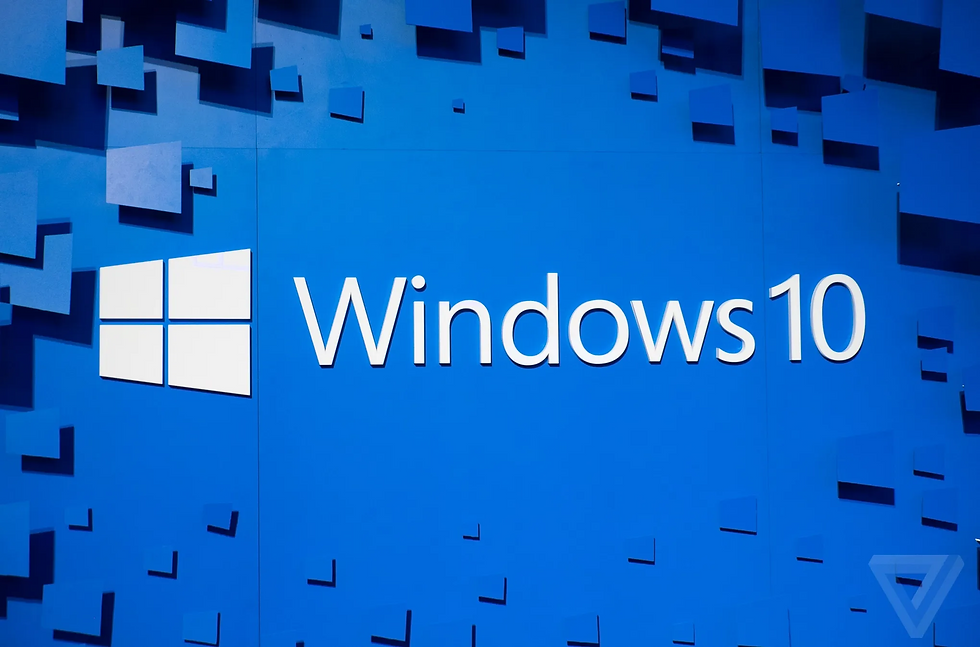Windows 10 Deadline Spurs PC Market Growth Despite Uncertain Trade Winds
- Flexi Group
- Aug 4
- 3 min read
The global PC market saw a notable upswing in the second quarter of 2025, with shipments of desktops, notebooks, and workstations climbing 7.4% year-over-year to reach 67.6 million units, according to new data released by Canalys, now part of Omdia.

Driving this growth was a surge in commercial demand triggered by the looming end of support for Windows 10, slated for October 2025. Notebook shipments — including mobile workstations — grew by 7% to 53.9 million units, while desktop shipments, inclusive of desktop workstations, jumped 9% to 13.7 million units.
However, the commercial momentum contrasts with weakened consumer demand, as global macroeconomic conditions continue to dampen household purchasing confidence.
“The Windows 10 end of support deadline this October is providing essential market stability, but is affecting consumer and commercial segments differently,” said Kieren Jessop, Research Manager at Canalys. “The commercial refresh cycle is providing vital momentum for the market.”
In a June poll conducted among channel partners, over half said they expect their PC business to grow year-on-year in the second half of 2025. Notably, 29% projected growth of over 10%.
“While businesses are displaying a greater sense of urgency in reacting to the end of Windows 10, consumers are delaying purchases amid macroeconomic uncertainty,” Jessop added. “As those consumer purchases are pushed into 2026, we anticipate the consumer PC market to grow next year as it coincides with a potential refresh cycle of COVID-era devices, which are starting to reach their end of life.”
Yet alongside the operating system deadline, the Trump administration’s unpredictable tariff strategy looms large over the industry. Though PCs remained exempt from tariffs in Q2, indirect consequences from evolving U.S. trade policy continue to cloud long-term planning.
“The Trump administration’s evolving tariff policies continue to reshape global PC supply chains while casting significant uncertainty over market recovery,” said Ben Yeh, Principal Analyst at Canalys.
He noted that U.S. imports of PCs have shifted dramatically away from China toward Vietnam in response to potential tariff threats. “Although Trump’s reciprocal tariffs have been delayed again, this time to 1 August, and PCs currently remain exempt from tariffs regardless of origin, the underlying uncertainty persists,” Yeh explained.
A newly signed U.S.-Vietnam trade agreement has only deepened confusion, imposing a 20% tariff on Vietnamese goods and a 40% tariff on transshipped items. Yeh raised concern over how enforcement criteria will be determined, stating, “The key question is whether PCs manufactured in Vietnam using Chinese components or through Chinese-controlled operations will be classified as transshipments and face the 40% tariff.”
“What began as straightforward China avoidance has evolved into a complex regulatory maze,” Yeh said. “With enforcement criteria still undefined, market players face the reality that supply chain diversification alone may not provide the cost stability they initially sought.”
Despite these headwinds, the quarter ended with positive results for leading PC manufacturers. Lenovo retained its top spot, shipping 17.0 million units, marking a 15.2% increase year-over-year. HP followed with 14.1 million units, a modest 3.2% rise.
Dell, however, experienced a 3.0% decline, shipping 9.8 million units, placing it third. Apple saw robust growth, shipping 6.4 million units — a 21.3% increase — boosting its market share to 9.4%. Asus rounded out the top five with 18.4% growth, moving 5.0 million units during the period.
While the Windows 10 sunset has fueled a short-term surge, the long-term outlook for the global PC industry remains fraught with uncertainties, particularly in the U.S. market. Trade policies, supply chain complexity, and consumer hesitation will all play crucial roles in determining whether the momentum continues into 2026.
By fLEXI tEAM
.png)
.png)







Comments